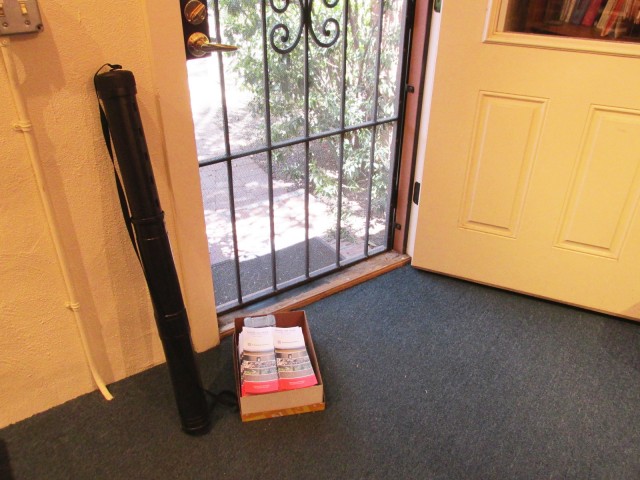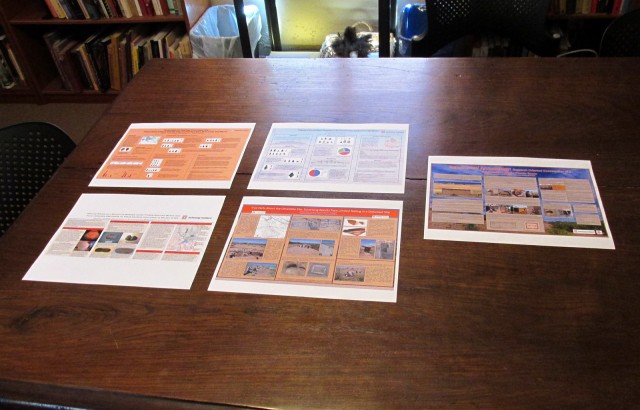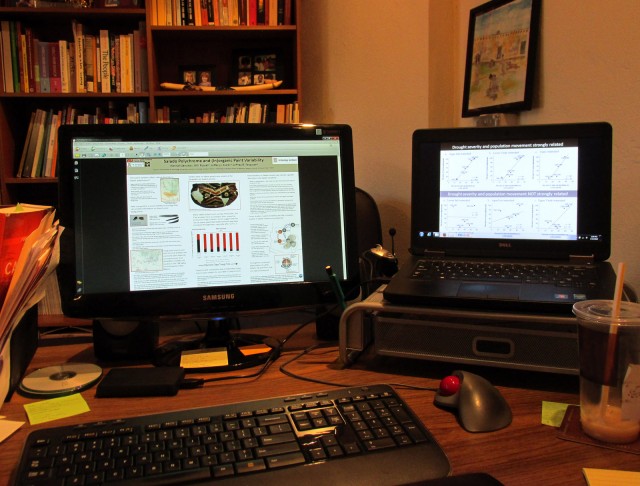- Home
- >
- Preservation Archaeology Blog
- >
- What Most of Us Are Doing This Week: Ridiculously ...

Many of us here at Archaeology Southwest will be spending part of this week in San Francisco, California, at the Society for American Archaeology Annual Meeting. Every year, thousands of archaeologists flock to a different North American city to overwhelm local hotels, convention centers, ethnic restaurants, and cheap bars, where we gather to discuss our work with colleagues in formal research talks and informal gatherings. We often share a convention center with other groups, but it’s quite easy to pick us out of the crowd: from the top of conference center escalators, the archaeologists are visible as rivers of bright, flowing skirts, sandals, and khakis (that haven’t yet degenerated into field pants), punctuating the sea of dark business suits and clicking heels worn at those other conferences.
Many of our presentations are formal 15-minute lectures with PowerPoint slides, presented in dark rooms full of people who not only share our most obscure interests, but also even give a little chuckle at the ubiquitous cute title with a colon in the middle. We also present posters summarizing our work, usually crammed into a lively room where interested colleagues bunch up to ask perceptive questions about graphs and charts and chat about how their current research compares to ours. Papers and posters are gathered into sessions on similar topics, so we can be sure of a like-minded audience who won’t notice the jargon that creeps insidiously into our speech and writing (when we don’t have Kate Sarther Gann around to watch over us). Several of us are also in forums this year, where participants gather to briefly present their experience or viewpoint on a topic and then discuss ideas with audience members.

Although all our preparation and stress focuses on our conference presentations, one of the most productive parts of the meetings is all the talking that goes on in informal settings. For many of us, this is a chance to reconnect with friends from college, field schools, and graduate school who are now spread across the country. We may start out chatting about exciting life events and other personal things, but the conversation always comes back around to archaeology pretty quickly—Oh, congratulations on your new baby! Are you taking her out to your field site this summer? We meet people who are running field projects near ours, analyzing datasets from time periods we’re interested in, or know the location of a museum collection from an old excavation we’d love to use in a research project.

Although the preparation that leads up to them is exhausting, the SAA meetings themselves always recharge my energy and enthusiasm. Watching presentations and having conversations with people who work on topics close to my own interests lets me hear about the latest research long before it finally appears in journal articles or reports. Watching presentations on seemingly unrelated topics is sometimes even better, as these can give me a new perspective on something I’ve been puzzling over or introduce me to a new method or approach researchers in my area haven’t traditionally used.
We’re all a little worn out right now as we put the finishing touches on our presentations, but next week the office will be buzzing with energy again as we return, eager to work on projects with fresh eyes and to share what we’re learning with you.
UPDATE (04/21/2015): Check out posters from our “New Perspectives on Salado” session here.

Here’s what the SAA attendees from Archaeology Southwest are presenting this week:
Thursday
Finding the Balance: Case Studies in Collaboration and Community Engagement from the American Southwest, by Deborah Huntley, Suzanne Eckert and Karen Schollmeyer
Intensive Archaeological Sampling for Fine-Grained Resolution of Human-Environment Relationships: Fauna from the Sand Canyon Locality and the Central Mesa Verde Region, by Jonathan Driver and Karen Schollmeyer
Forum: The Perspectives and Challenges of Faunal Data Integration and Comparative Analysis; discussants Keith Kintigh, Tiffany Clark, Katherine Spielmann, Karen Schollmeyer, Sarah Neusius, and Bonnie Styles
Forum: Diverse Digital Archaeologies: A CAA-NA & DDIG Event; discussants Michael Ashley, Lisa Fischer, Douglas Gann, Timothy Goddard, Shawn Graham, Sarah Kansa, Francis McManamon, Katy Meyers Emery, Eric Poehler, Maria Raviele, Heather Richards-Rissetto, and Ash Scheder Black
Friday
Venturing into the Borderland: Revisiting the 13th-Century Occupation of the Upper Gila, by Katherine Dungan
Salado in the Upper Gila, by William Doelle, Karen Schollmeyer, and Jeffery Clark (no colon!)
Introducing CVR, a Content Management System for Digital Archaeological Interpretation, by Douglas Gann (no colon!)
Religion on the Rocks book signing for University of Utah Press, by Aaron Wright
Saturday
New Perspectives on Salado, poster session organized by Karen Schollmeyer and Jeffery Clark
- Twenty Years of Studying the Salado, by Jeffery Clark and William Doelle
- True Facts about the Dinwiddie Site: Surprising Results from Limited Testing in a Disturbed Site, by Alexandra Covert and Leslie Aragon
- Experimental Archaeology: Insights from the Construction of an Adobe Room, by Aaron Trumbo and Allen Denoyer
- Ground Stone as a Migration Marker: Using Finger-Grooved Manos and Fully Grooved Axe Heads to Trace Kayenta Influence at Salado Sites, by Maxwell Forton
- Black and White and Shades of Gray: Projectile Points and Bifaces from the Dinwiddie Site, Southwestern New Mexico, by Riley Duke and Stacy Ryan
- Technology and Typology in the Upper Gila: Flaked Stone from the 3-Up and Fornholt Sites, Mule Creek, New Mexico, by Stacy Ryan
- Reading Between the Lines: Salado Polychrome and (In)organic Paint Variability, by Hannah Zanotto, Will Russell, and Jeffrey Ferguson
- Temporal and Spatial Variability in Roosevelt Red Ware Painted Decoration, by Patrick Lyons and Deborah Huntley
- Renegotiating Identity in a Cultural Crossroads: Salado in the Safford Basin, by Anna Neuzil
- The Salado Preservation Initiative: Combining Research Investigations with Regional Preservation Planning, by Andy Laurenzi, Matthew Peeples and William Doelle
- A Local Expression of “Salado” in Tonto Basin, by David Jacobs, Arleyn Simon, Owen Lindauer and Glen Rice
We’ve Gotta Get Out of this Place: Formation and Re-Settlement of a Pre-Classic Hohokam Village, by Leslie Aragon
Life and Ritual at the Edge of the Lava: The Ancient Chacoan Community at Las Ventanas, by Paul Reed
Scales of Identity and Scales of Analysis in Western New Mexico, by Matt Peeples
Farmers’ Responses to Resource Stress and Climate Change in the Prehistoric US Southwest, by Karen Schollmeyer and Scott Ingram
Sunday
Anarchy and Archaeology: Contesting Hierarchy, Power, and Authority in the Past and Today, symposium organized by Matthew Sanger and Lewis Borck
Hidden Revolutions: Re-Examining Transitions in the American Southwest from an Anarchist and Network Perspective, by Lewis Borck
Explore the News
Related to This
-
Project Las Ventanas